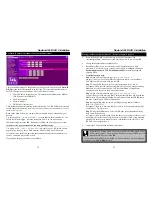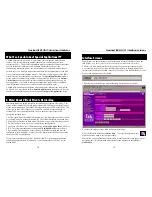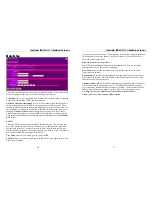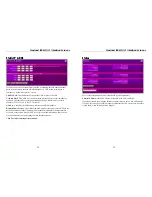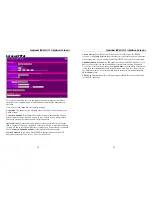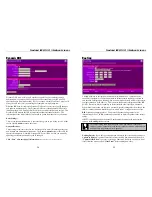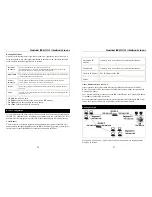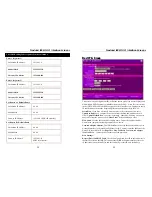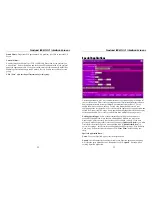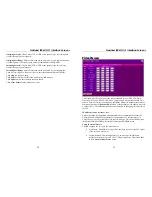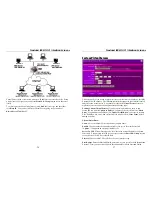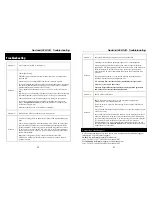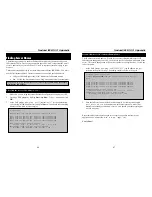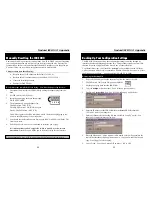
Nexland ISB SOHO: Interface Screens
40
Expert Level
This screen has some advanced settings for the ISB. Most users can safely ignore
these settings as the defaults are optimal and the most secure.
Idle Renew DHCP
: If you are experiencing disconnects from a DHCP type Internet
account after periods of inactivity, enter a value into this field (minutes) after which
the ISB will try to automatically renew the connection. You must experiment to find
the best value, the higher the better. You can also Force Renew by clicking the button.
MTU
: The ISB negotiates the MTU size from your ISP. You should leave this value
unless for some reason the ISP is providing an MTU that's not optimal. MTU
problems are evidenced by problems seeing certain websites, sending long e-mails, or
extremely decreased performance.
Echo Request
: You should leave this setting unless told to change by Nexland
support.
Allow IDENT Port
: Port 113 (IDENT) normally contains the Host Name/Company
Name information. By default the ISB has all ports stealth. This makes your
computer(s) invisible to those outside. Some servers (like a certain E-Mail or MIRC
servers) use the IDENT port of the system accessing them. Enabling this setting
makes Port 113 Closed, not Stealth (it is NOT Open). Only enable if you are having
problems accessing a server.
Nexland ISB SOHO: Interface Screens
41
NAT Function
: Disabling NAT turns the ISB into a bridge or pure router. This is
useful if you already have a NAT device on your network and are using the ISB as a
PPPoE "dial-up" device only. You must have routing entries made on the routing
table or be using RIP2 for proper communication with NAT disabled.
Log Level
: Choosing Debug will give more verbose status log useful for Nexland
support. It also throws all WAN side packets into the LAN for easy port scanning.
Keep this setting at user level unless needed as Debug mode can cause collisions under
heavy traffic loads.
IPsec Type
: IPsec pass through is implemented automatically by the ISB. Keep at
2
SPI
unless instructed by Nexland support.
None
lets you use your VPN client in
Exposed Host (DMZ)
mode if having problems connecting from behind the ISB.
Remote Access IP Range
: The ISB's web interface can be accessed remotely from a
range of IP addresses. If you wish to remotely configure the unit, enter the start and
end IP range (enter the same value for both if it's a single IP). You can then access the
unit from an external web browser by entering the WAN port IP followed by port
8088.
For example: type "http://207.158.227.235:8088" into your external browser if
207.158.227.235 was the address obtained from your ISP by the unit. You must be
accessing from the IP range specified. Also, you should set the
Configuration
Password
for security.
You can Enable "
Allow WAN Upgrade
" if you wish to remotely perform TFTP
upgrades to the unit's firmware from the above IP range. Default is Disabled.
Click
Save
after making any changes.
Click
Restore Defaults
to return the ISB to factory settings.

